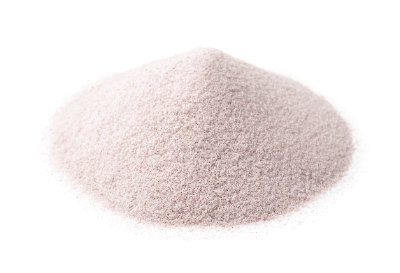What Is Silica?

Silica is the generic name for silicon dioxide, an oxide of silicon.
Its chemical formula is SiO2, and its crystal structure is tetrahedral, consisting of silicon bonded to four oxygen atoms. The tetrahedral structure is combined to form a variety of structures, resulting in many types of silica, including crystalline and amorphous silica.
Silica is abundant in the earth’s crust and occurs naturally as silica crystals in the form of quartz (crystal), tridymite, and cristobalite. Silica is used as a raw material for silica gel, a desiccant for optical components.
Uses of Silica
Silica is a colorless, transparent solid with a very high melting point. It also has excellent chemical resistance and reacts only with some acids and alkalis.
Because of its heat resistance and chemical resistance, silica is used in chemistry laboratory equipment and spectroscopic analyzers. It is also used as a raw material for silica gel, a desiccant. Highly transparent ones are processed into optical components such as lenses and prisms.
It also plays an important role in the electronics and semiconductor industries. Silica has insulating properties and is indispensable in the manufacture of electronic components and semiconductor devices. In addition, it is widely used as a material for glass and optical fiber.
Quartz, one of the silica crystals, is known for its use in ornaments and as a quartz crystal unit.
Properties of Silica
Silica can be crystalline or amorphous, and the name silica is used especially when referring to them collectively. Crystalline silica is known as crystalline polymorphs such as quartz, cristobalite, and tridymite. Amorphous silica, on the other hand, is a generic term for materials containing silicon dioxide that do not have crystalline properties. Examples include silica aerogel and fumed silica.
The chemical formula of silica is SiO2, where one silicon atom is covalently bonded to four oxygen atoms. These form a SiO4 tetrahedral structure, with each oxygen atom belonging to two SiO4 tetrahedral structures. The crystalline polymorphism of crystalline silica, such as quartz, cristobalite, and tridymite, results from differences in the arrangement of these SiO4 tetrahedral structures.
Silica itself is not highly reactive with other substances, but it does react with some acids and alkalis. For example, when reacted with hydrofluoric acid, hexafluorosilicic acid is formed, and when reacted with sodium hydroxide, sodium silicate is formed.
Types of Silica
Silica is the general term for silicon dioxide, which comes in a variety of types, including:
1. Silica Particles
They exhibit different properties depending on their shape, such as spherical or scaly, particle size, and porosity. Colloidal silica is silica particles dispersed in a solvent such as water.
2. Fumed Silica
Fumed silica is a white powder with very low bulk density, called dry silica or highly dispersed silica.
3. Silica Aerogel
Silica aerogel is a porous material consisting of silica particles that form a three-dimensional network framework with a pore spacing of approximately 50nm.
4. Silica Glass
Silica glass is characterized by its low metallic impurities, high heat resistance, excellent light transmission over a wide range of wavelengths, and resistance to attack by acids and alkalis.
Other Information on Silica
Safety of Silica
Silica particles can adsorb impurities and are used as a filter aid in food production. An example is the filtration of beer and other alcoholic beverages and soft drinks.
Oral ingestion of silica has little serious effect on the human body, but inhalation of airborne silica particles through the nose or mouth can cause serious symptoms. In particular, inhalation of crystalline silica such as quartz has been reported to cause a type of pneumoconiosis called silicosis.
Symptoms of pneumoconiosis tend to be subjective at first, but over time symptoms such as cough, phlegm, shortness of breath, and difficulty breathing may occur. Actual cases of acute pneumoconiosis due to inhalation of silica particulates have been reported in factories that handle high-purity crystalline silica particulates. To prevent such accidents, handling should be done using protective equipment such as dust masks.